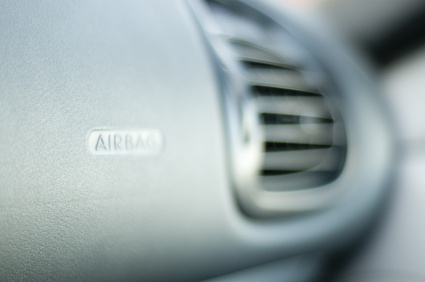
Airbags can be equipped in multiple compartments of a vehicle, though the most common placement are the steering wheel hub and front passenger instrument panel. While the idea of an airbag in a car may seem simple, it takes several components, made of several different materials, for the safety mechanism to function. In order for an airbag to properly deploy and work effectively, a series of chemical reactions must take place; therefore, the materials used in an airbag system must be carefully chosen.
Sensors measure the severity of the crash to determine if the impact is enough to require airbag inflation. The sensor is a small ball made of steel that is held in place by a spring or a magnet. The ball stays in place unless the vehicle decelerates very rapidly. If the impact is above the deployment threshold, the airbag will inflate. The threshold is between eight and 16 miles per hour, depending if the person in the vehicle is wearing a seat belt, with the higher threshold for belted occupants. When the sensor is activated and the steel ball moves, this turns on an electrical circuit.

A small pellet of sodium azide is ignited after the steel sensor activates the electrical circuit. The ignition of the sodium azide causes a chemical reaction, resulting in nitrogen gas. It is this nitrogen gas that inflates the airbag itself. This gas is harmless, and fills the bag in less than a second. Generally, the entire process from sensor activation to bag deployment takes approximately one-twentieth of a second.

The bag itself is generally made of a synthetic fabric such as polyamide or nylon. There are small vents within the weave of the fabric, allowing the gas to escape slowly so that it acts more as a soft cushion, rather than a hard barrier. It only takes a few seconds for the pressure inside the bag to decrease to that of atmospheric pressure.
